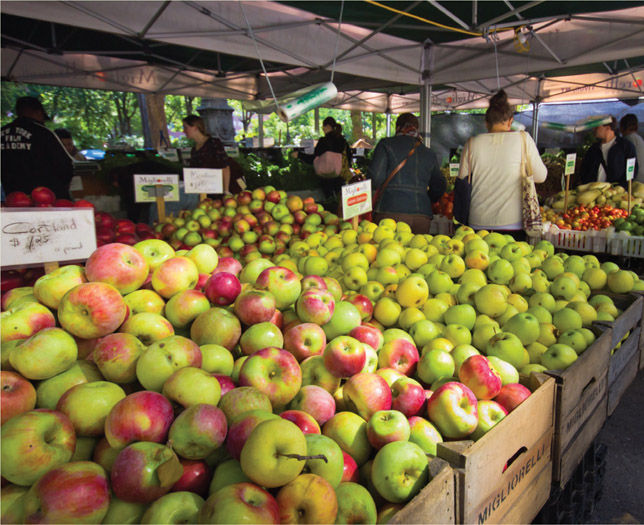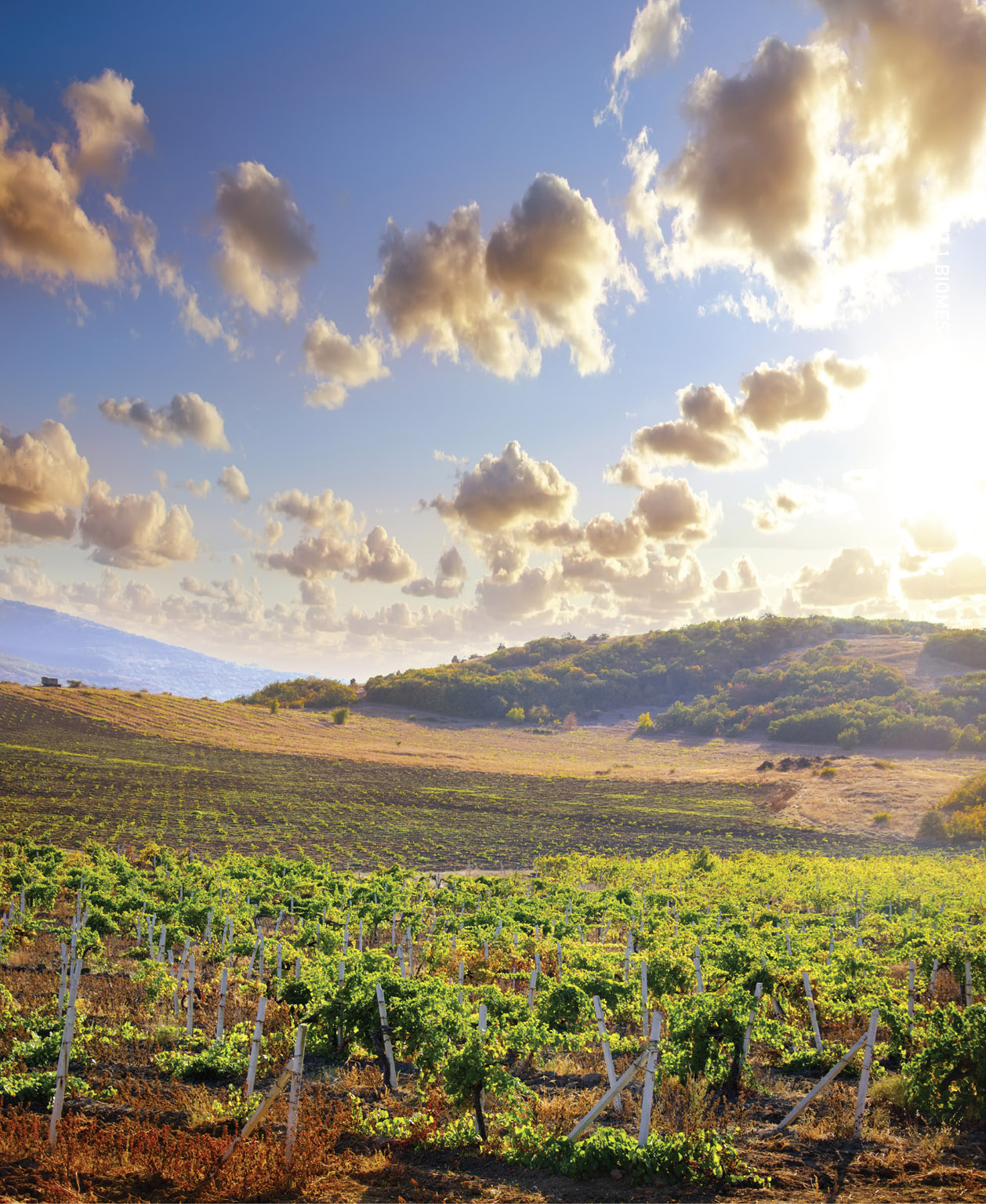Chapter summary
- Agriculture has been practised for thousands of years all over the world.
- In Australia, the arrival of the First Fleet brought with it the agricultural practices of Europe.
- By 1860, the Australian agricultural revolution was in place, with a boom in breeding livestock and land cultivation.
- The spread of settlement in Australia can be linked to the expansion of agriculture.
- Landscapes were fragmented, and were based on the European notion of ownership.
- By the mid-1860s, governments were under pressure to ‘unlock’ the land, and break the areas previously settled by squatters into small farming allotments.
- During the second half of the nineteenth century Australian governments recognised that Australia needed to be self-sufficient, and could not rely solely on the export of wool.
- Australia’s unique climate placed limits on early agricultural practices. Australia’s dryness was a problem because many of the agricultural practices used were brought from Europe, which is not dry.
- Australia’s agricultural zones all need specific practices to deal with their climate and ecology.
- By the early twentieth century, agricultural production was a large part of the Australian economy.
- Systematic agricultural settlement in Australia was further developed with the establishment of ‘soldier settlement’ schemes for men returning from World Wars I and II.
- The Green Revolution that began in the 1950s was driven by advances in agricultural science and technology that led to a greater understanding by farmers of efficient land, soil and water management practices.
- Agricultural land use places pressure on the environment: the effects include erosion, salinity, loss of biodiversity and a decline in water quality.
- Australian farmers have been very successful at providing innovative solutions to problems and maximising agricultural productivity.
- They have also had to deal with the country’s vastness and relative remoteness from the rest of the world.
- From the 1970s onwards, changes in the national and global economies have put pressure on farmers to become more competitive.
- Today farming requires an understanding of the whole business of agriculture, from balancing the nutrient levels in the soil to buying and selling water and monitoring international prices.
- Agriculture in Australia has changed dramatically, particularly in the last 60 years: there has been a real need for increased production because of population growth, and also an ideology that progress and productivity are intrinsically good things.
Interactive activity
Key terms

Short-answer questions
- Analyse how a lack of understanding about Australia’s climate and geology and its limitation in the first 150 years of settlement led to increased environmental degradation.
- Discuss the Green Revolution and how it changed agriculture.
- List some of the changes experienced by Australian agriculture in the last 40 years.
- Describe sustainable agriculture.
- List the challenges facing the future of food security in Australia and overseas.
Extended-response question
Problem solving for sustainable development: finding a compromise between Australia’s energy needs and those of agriculture, the environment and the economy.
Securing energy sources such as gas in Australia is vital for the economy. Food and fibre security is also vital to Australia’s future prosperity. The question is how to balance the interests of industries such as mining and energy with those of agriculture, the environment and the economy.
Divide into small groups. Use a problem-solving model to explore the issues involved with coal seam gas exploration and production, and evaluate solutions that would be acceptable to all stakeholders. Each group should represent the interests of one of the following stakeholders in the debate:
- coal seam gas industry
- farmers
- environmentalists
- politicians.
Step 1 – Fact finding
- List the facts relating to coal seam gas production.
- Identify where your group stands on the issue: negative, positive or somewhere in between?
- List the information you need in order to develop solutions.
- Create a list of sources where that information can be found.
Step 2 – Problem finding
- Identify all the underlying problems and issues related to coal seam gas production.
- Analyse the information and identify a major problem/s which, if solved, would provide a solution for farmers and environmentalists and the coal seam gas industry.
Step 3 – Idea finding
- List as many ideas as you can for solving the problem/s.
- Brainstorm ideas, focusing on quantity rather than quality of ideas. (Evaluation of the ideas can take place at a later stage.)
Step 4 – Solution finding
- Evaluate the ideas proposed for solving the problem. As a group, debate them and decide on a hierarchy of solutions. Can any of these ideas be combined to make them more suitable?
Step 5 – Acceptance finding
- Develop a plan for implementing your chosen solution. Consider all those who must accept the solution, plan for answering their questions and decide how to convince them that the solution is appropriate.
- Present your arguments to the class and answer any questions they raise.
- Class members from each stakeholder group should ask questions of the group presenting that reflect the interests of their group.
Step 6 – Evaluation
- Were there any solutions that all stakeholders came up with?
- What were some of the disagreements between the stakeholders and why were there disagreements?
- What are some of the ways solutions to these types of issues that are acceptable to all stakeholders can be found? Suggest some strategies for managing the interests of all groups.
